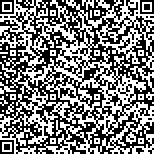| 引用本文: | 刘雪花,赵秀侠,高攀,韩飞园,周非,周忠泽,徐慧琴.安徽菜子湖浮游植物群落结构的周年变化(2010年).湖泊科学,2012,24(5):771-779. DOI:10.18307/2012.0519 |
| LIU Xuehua,ZHAO Xiuxia,GAO Pan,HAN Feiyuan,ZHOU Fei,ZHOU Zhongze,XU Huiqin.Annual dynamics of phytoplankton abundance and community structure (2010) in Lake Caizi, Anhui Province. J. Lake Sci.2012,24(5):771-779. DOI:10.18307/2012.0519 |
|
| |
|
|
| 本文已被:浏览 8304次 下载 4312次 |

码上扫一扫! |
|
|
| 安徽菜子湖浮游植物群落结构的周年变化(2010年) |
|
刘雪花, 赵秀侠, 高攀, 韩飞园, 周非, 周忠泽, 徐慧琴
|
|
安徽大学资源与环境工程学院, 安徽省生态工程与生物技术重点实验室, 合肥 230039
|
|
| 摘要: |
| 2010年对菜子湖浮游植物群落结构进行了调查和分析,结果显示:(1)共鉴定浮游植物8门110属285种,不同月份浮游植物的种类组成存在极显著差异,3月份种类数最多,173种,1月份最少,105种.优势度分析显示:蓝藻存在全年高峰;硅藻存在1、5、9、11月的高峰;黄藻存在1、3、5月的高峰;绿藻存在11月的高峰,隐藻存在5月份的高峰;金藻存在1月份的高峰.不同月份浮游植物的细胞密度亦存在极显著差异,7月份最高,为(66.13±8.58)×105 cells/L,1月份最低,为(12.78±0.61)×105 cells/L,夏、秋季较高,冬、春季较低;不同月份浮游植物的生物量差异极显著,9月份最高,为2.80±0.17 mg/L,5月份最低,为0.72±0.03 mg/L.(2)Margalef丰度指数为1.51~3、Shannon-Weaver多样性指数为1.41~3.01、Pielou均匀度指数为0.39~0.66,各指数表现为冬、春季节大于夏、秋季节,3月份最高,7月份最低.(3)聚类分析的结果显示,月份不同影响因素不同,菜子湖水域浮游植物按群落结构特征的分组不同.(4)2007年相比,2010年浮游植物物种数有明显下降,由340种下降到285种,细胞密度明显上升,由(5.91±0.90)×105 cells/L上升到(33.81±10.10)×105 cells/L,群落结构变化较大,贫营养型和固着型藻类都有所减少,富营养型藻类、丝状藻类和浮游性藻类增多. |
| 关键词: 浮游植物 生物量 聚类分析 菜子湖 群落结构 |
| DOI:10.18307/2012.0519 |
| 分类号: |
| 基金项目:国家水体污染控制与治理科技重大专项项目(2009ZX07103-002);国家自然科学基金项目(41072251);现代古生物学和地层学国家重点实验室项目(113106)联合资助 |
|
| Annual dynamics of phytoplankton abundance and community structure (2010) in Lake Caizi, Anhui Province |
|
LIU Xuehua, ZHAO Xiuxia, GAO Pan, HAN Feiyuan, ZHOU Fei, ZHOU Zhongze, XU Huiqin
|
|
Anhui Key Laboratory of Eco-engineering and Bio-technique, School of Resources and Environmental Engineering, Anhui University, Hefei 230039, P. R. China
|
| Abstract: |
| The annual dynamics of phytoplankton community structure in Lake Caizi has been investigated in 2010. The results indicated that:(1) A total of 285 phytoplankton species from 110 genera of 8 phylum were identified. Phytoplankton species composition in different months showed significant difference. The maximal number of phytoplankton species (173) occurred in March while the minimum (105) in January. The dominant class of phytoplankton changed seasonally. Cyanophyta peaked all the year round; diatoms had an apparent dominance in January, May, September and November; Xanthophyta also played an important role in January, March and May; Chlorophyta dominated in November, Cryptophyta dominated in May while Chrysophyta dominated in January. The cell density and biomass of phytoplankton were higher in summer and autumn than that in winter and spring. The cell density of phytoplankton between different months had significant difference. The maximal density, with the value (66.13 ± 8.58)×105 cells/L occurred in July while the minimal value of (12.78 ± 0.61)×105 cells/L appeared in January. Whereas, the maximal biomass of phytoplankton(2.80 ± 0.17 mg/L) occurred in September and the minimal(0.72 ± 0.03 mg/L) appeared in May, and the biomass in different months was also significant different. (2) Temporal variations of three indices (including Margalef index, Shannon-Wiener index and Pielou evenness index) were obvious. All the indices were higher in winter and spring than those in summer and autumn. The maximal value occurred in March while the minimal one appeared in July. (3) The phytoplankton community structure was influenced by different factors in different months. As a result, the groups of sampling station changed seasonally according to cluster analysis. (4) The obvious variation of phytoplankton community structure was present in 2010 compared with that in 2007. The number of species decreased from 340 in 2007 to 285 in 2010, however, the cell density increased obviously from (5.91 ± 0.90)×105 cells/L in 2007 to (33.81 ± 10.10)×105 cells/L in 2010. At the same time, both the numbers of oligotrophic algae and perphytic algae decreased to the same extent and eutrophic, filamentous and planktonic algae increased. |
| Key words: Phytoplankton biomass cluster analysis Lake Caizi community structure |
|
|
|
|